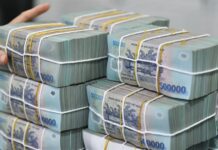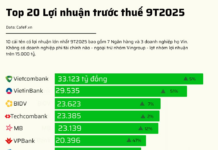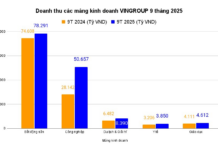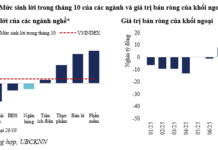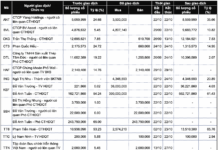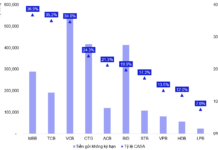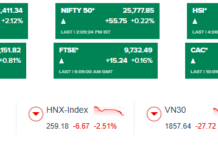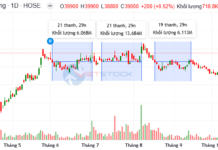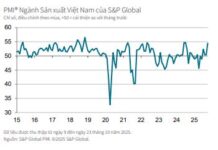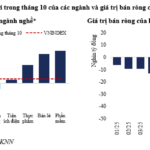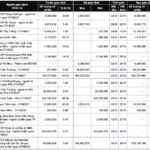
The Federal Reserve (Fed) announced on Wednesday that it would cut interest rates by 50 basis points in the face of declining inflation and clear signs of a slowing US economy. This Fed rate cut is a double-edged sword for Vietnam’s economy, as a decrease in the value of the US dollar will ease depreciation pressure on the VND, but a slowdown in the US economy will impact Vietnam’s GDP growth.
First, the good news. In early 2024, the VND had depreciated by almost 5% compared to the beginning of the year, forcing the State Bank of Vietnam (SBV) to tighten monetary policy by withdrawing liquidity from the system. Some experts even predicted that the SBV would raise Vietnam’s policy rate by another 50 basis points by the end of this year. These developments have supported the value of the VND, but the depreciation pressure of ASEAN currencies only really eased at the end of June when expectations of a Fed rate cut began to rise.
The market now expects the Fed to cut rates by more than 100 basis points this year and another 100 basis points next year, which has led to a nearly 4% appreciation of the VND since the end of June, along with a 7-10% appreciation of the Malaysian Ringgit, Thai Baht, and Indonesian Rupiah. The strong appreciation of the Indonesian Rupiah has allowed the country’s central bank to cut interest rates by 25 basis points this week to 6%. While VinaCapital does not expect the SBV to follow suit, it is now unlikely that the SBV will raise interest rates as the VND depreciation is currently less than 1.5% since the beginning of the year, still within the SBV’s “safe zone.”
However, what is more concerning is the implication of the rate cut on the state of the US economy. As mentioned earlier, exports, in general, and exports to the US, in particular (up nearly 30% in the first eight months of 2024), have been the most important factor driving Vietnam’s GDP growth this year. Therefore, a slowdown in the US economy is likely to reduce American consumer demand for “Made in Vietnam” products such as laptops, mobile phones, and other goods.
As a result, Vietnam’s GDP growth in 2025 will have to rely on internal factors to offset the impact of the slowing US economy. Fortunately, the government has many tools at its disposal to boost the economy, such as increasing infrastructure spending and promoting a recovery in the real estate sector. According to VinaCapital’s industry sources, real estate transactions in Vietnam are likely to increase by up to 35% year-on-year in the first nine months of 2024. Focusing on these two areas will directly stimulate the economy, and a more vibrant real estate market will surely improve consumer sentiment and spending, which has been somewhat subdued in 2024.
Finally, while VinaCapital is not surprised by the Fed’s rate cut, we are concerned about the implications of the magnitude of this cut on the US economy. VinaCapital has repeatedly emphasized the view that Vietnam’s current GDP boost from export growth may wane in the coming year, and the Fed’s move has essentially confirmed this. Increasing infrastructure spending and accelerating the recovery of the real estate market are two powerful tools the government can use to avoid negative impacts from declining export growth.
“Resolute in the Pursuit of 7% Growth, Despite the Super Typhoon’s Challenges”
The outlook for Vietnam’s economy remains positive, with forecasts from both domestic and international economic organizations predicting high-growth scenarios that could even surpass the upper target of the 2024 GDP goal. Despite the potential setbacks caused by Super Typhoon Yagi, Prime Minister Pham Minh Chinh remains steadfast in his ambition to achieve a remarkable 7% growth rate for the year.






